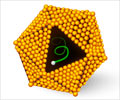How many drugs in reality manage to actually reach patients after clinical trials tag them with a high liver damage risk even though they're actually safe?

Paul B. Watkins, M.D., who made the presentation, explained that drug-induced liver damage is a rare drug side effect, but so serious — the No. 1 cause of sudden liver failure — that it has a disproportionate impact on a drug’s fate. Liver toxicity is also the No. 1 safety concern causing pharmaceutical companies to halt development of new medicines — sometimes after spending hundreds of millions of dollars on clinical trials to establish the drug’s safety and effectiveness. Likewise, it is the leading reason why drugs already on the market must be restricted or banned.
"Blood tests used today in clinical trials for assessing liver safety are the same ones we’ve used for at least 40 years," said Watkins, referring to tests that measure substances released into the blood when liver cells die. "The tests do indicate damage to liver cells, and everyone assumed over the years that a positive result raised a red flag about a drug’s safety. We now know, however, you can have abnormalities in these tests — even pretty remarkable ones — with drugs that pose no serious threat of damaging the liver."
Watkins described research, done with colleagues at the Hamner-University of North Carolina Institute for Drug Safety Sciences, in which healthy volunteers took prescription and non-prescription medicines that have been in use for decades and have an established safety record. The volunteers then got the standard blood tests for liver damage. Those tests measure levels of two enzymes, aspartate aminotransferase (AST) and alanine aminotransferase (ALT), which are released into the blood when liver cells die. The results showed alarmingly high AST/ALT levels, which the scientists first thought were false-positive results, meaning that liver cells weren’t really dying. Follow-up tests, however, verified that liver cells were dying.
Those experiments led to a realization that drugs can cause liver cells to die, produce elevated AST/ALT levels in patients, but not cause the kind of permanent liver damage that can mean a liver transplant or death. In most cases, the liver recovers and adjusts, and patients actually can continue taking the medication without risking permanent damage, Watkins explained.
In other patients, Watkins suspects, the immune system goes into overdrive in response to the initial damage and mistakenly begins to attack and kill liver cells. If that’s the case, a test that accurately predicts the risk of permanent liver damage would detect the proteins and genes associated with activation of the immune system.
DILIN is among major international efforts to develop better tests for predicting serious side effects of medicines. The European Union, for instance, is seeking better tests for liver, kidney and heart damage with its SAFE-T consortium. And the Predictive Safety Testing Consortium (PSTC) helps drug companies come together to validate safety testing methods. The U.S. Food and Drug Administration and its European and Japanese counterparts — the European Medicines Agency and the Japanese Pharmaceutical and Medical Devices Agency — advise the PSTC.
Improved liver toxicity tests may be a long way off. Watkins explained that development of such tests is just the first step. Then the tests must be validated on thousands of blood samples from patients with different diseases taking different drugs. Watkins is currently working to set up a liver safety consortium to get drug companies to work together and collect these samples to evaluate new tests.
Source-Eurekalert
 MEDINDIA
MEDINDIA

 Email
Email










